After visiting St. Francisco, we crossed the Plaza of San Francisco, walked a short block and entered the Church of La Compania de Jesus.
As hard as it may be to imagine this, La Compania is decorated with more gold than St. Francisco. Seven tons! This fact is not obscure — visiting the church essentially begs the question — but our guide did provide many pieces of far more obscure information during our days together.+
If you Google “La Compania” and Quito, you will immediately see descriptions using the phrase “bathed in gold.” Although I briefly considered renting the church for a spontaneous renewal of our wedding vows,++ I didn’t actually take a picture of it on principle. Instead, I am showing you the first Central Bank of Ecuador, which is a prosperous-looking Italian Baroque building constructed in 1927.
This Central Bank building is now a numismatic museum and the operative Central Bank is . . . somewhere else.
I did not know this until we came here, but Ecuador abandoned its own currency — the sucre — and switched to the USD in 2000. This decision was prompted by severe inflation and wild fluctuations in the value of the sucre. So everything here is priced and paid in U.S. dollars. While that’s easy for us, it feels a little weird.
I did know that South America is associated with chocolate, but I did not understand, until visiting Yumbos Chocolaterie in Quito, why. Chocolate, it seems, grows best (possibly exclusively) in equatorial climates. Thus, the arrival of drinking chocolate from South America in late 16th century Spain did not represent the adoption of a culinary innovation, but rather the importation of a previously unknown agricultural miracle.
Fine European chocolate-making depends on cocoa beans and cacao imported from equatorial regions — and Ecuador is a leading producer.@
Note: The more times I type “chocolate,” the stranger it looks to me.
Yumbos plied us with many tiny samples and it was the smoothest dark chocolate I’ve ever tasted. No bitter taste/after-taste. The Photographer and I bought 8 giant chocolate bars and in the days since have been protecting them from the harsh equatorial sun while traveling from place to place. Fortunately our guide came ready for any bizarre demand we might ejaculate — “we must protect our chocolate” — and had a cooler in the car.
Because this trip is focused on natural beauty (at lower altitudes), we only had two full days in Quito.
We spent our second afternoon at an archeological museum, Casa de Alabado. I highly recommend this exquisite museum if you share The Directrice’s enthusiam for pre-Columbian art. Or, as The Photographer once said (before he had spent time with The Directrice and pre-Columbian art), old pots.
One of the first pieces we encountered was this marker. The head is detachable from the body, intended to simulate human sacrifices.
One of the things I love about pre-Columbian art is how expressive the figures are, with a minimal number of features. And I love how it reflects the human impulse — nay, need! — to create art and add beauty to functional things.
As always, your Directrice was as captivated by the design of the museum and the display of the artifacts as she was by the collection itself. That must be the human impulse to miss the point. Look at these beautiful installations.
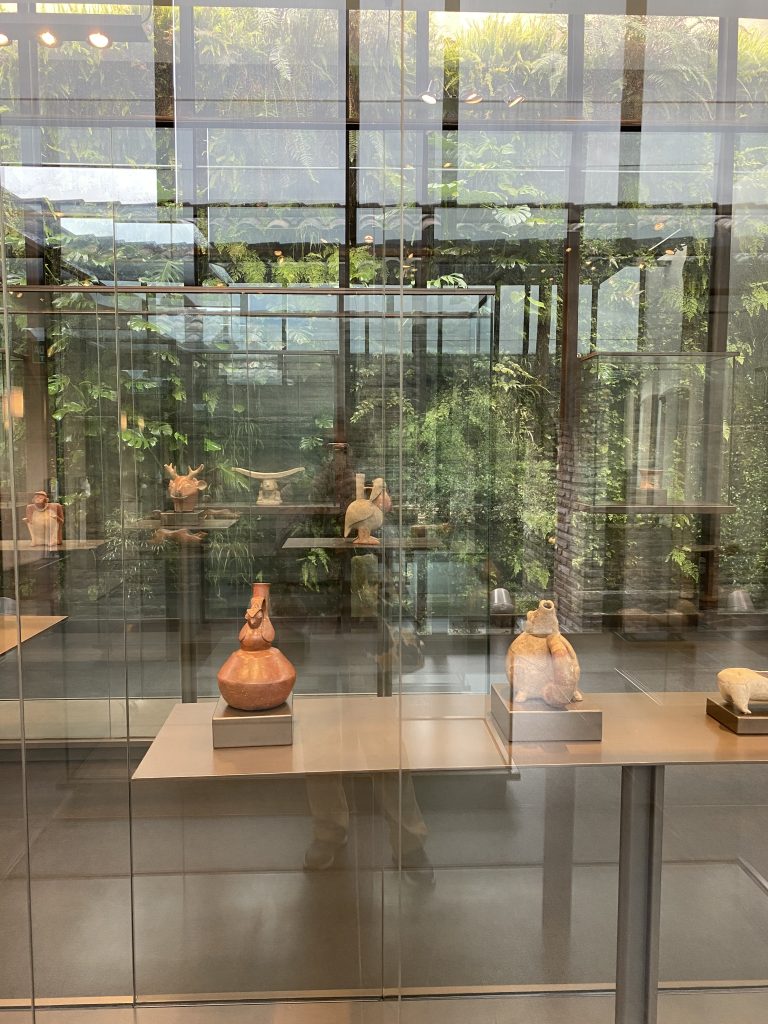
Note: There were plenty of old pots on display, too.
The next day, we left Quito for a rural spot. On the way, we crossed — and lingered on — The Equator Itself. More on this adventure in another day or so.
In case you missed it, my first equatorial post is here.
+ These facts included the five most popular automakers in Ecuador (Chevrolet, Kia, Toyota, Hyundai, and Nissan) and the cost of purchasing a full truck (semi-trailer) of gravel collected from the hills along the Pan American Highway outside Quito ($120 USD).
++ $2,000 USD, according to our guide.
@ A Belgian did invent the “eating chocolate” — or what we think of as a box of chocolates.

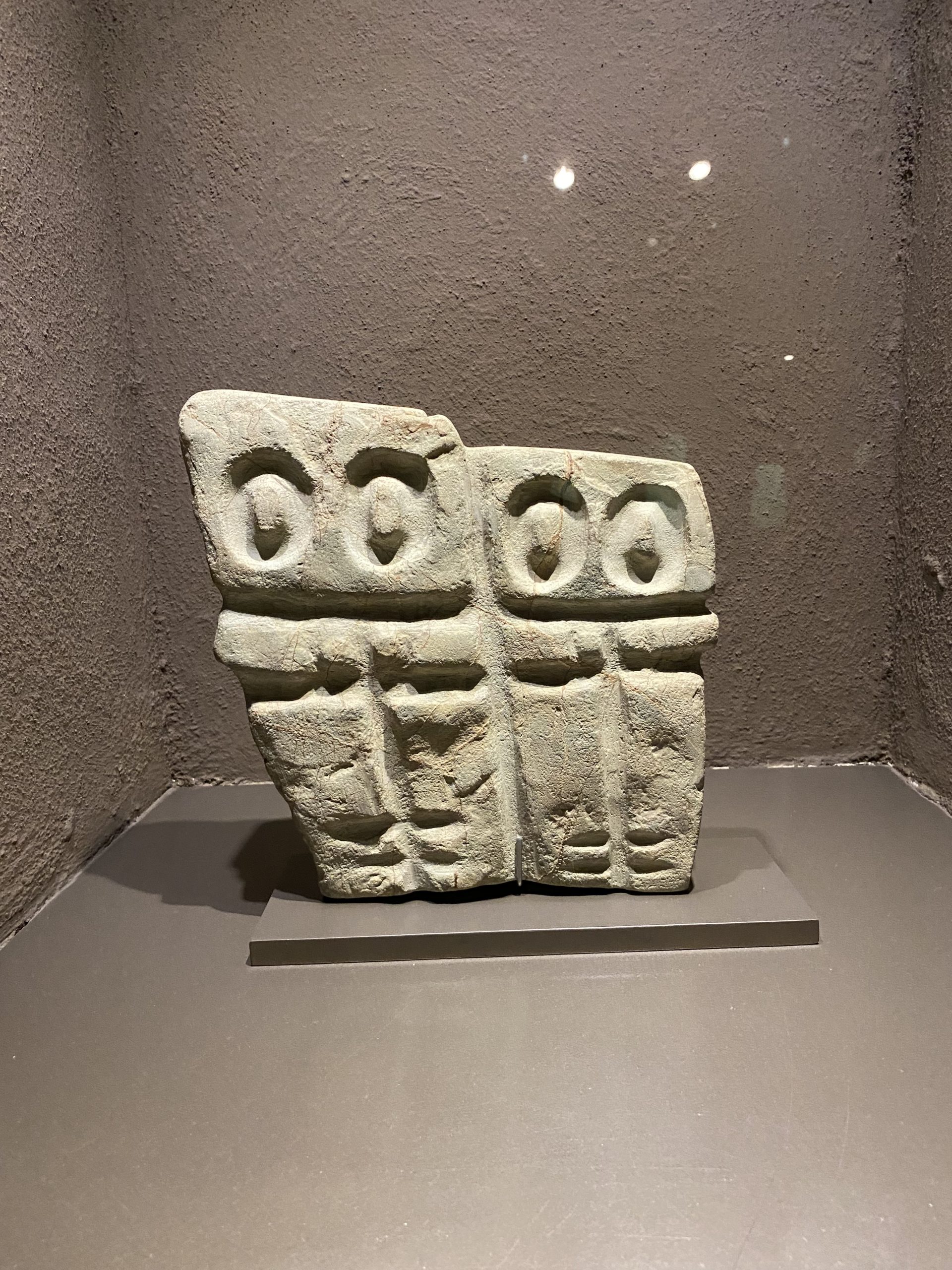
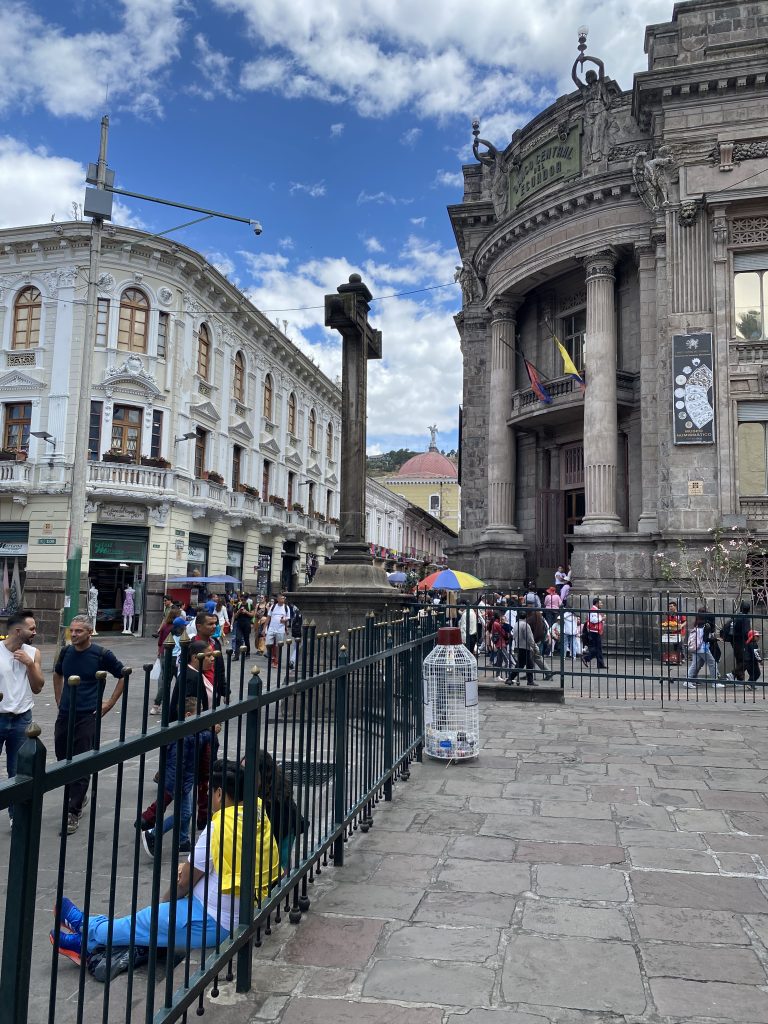
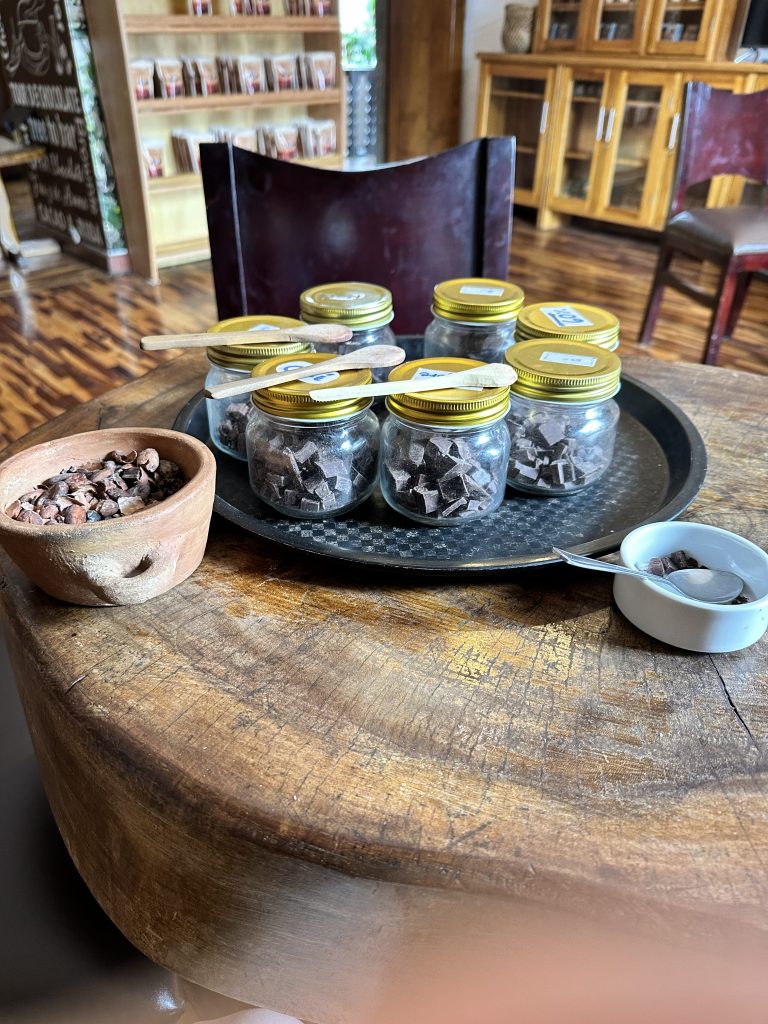
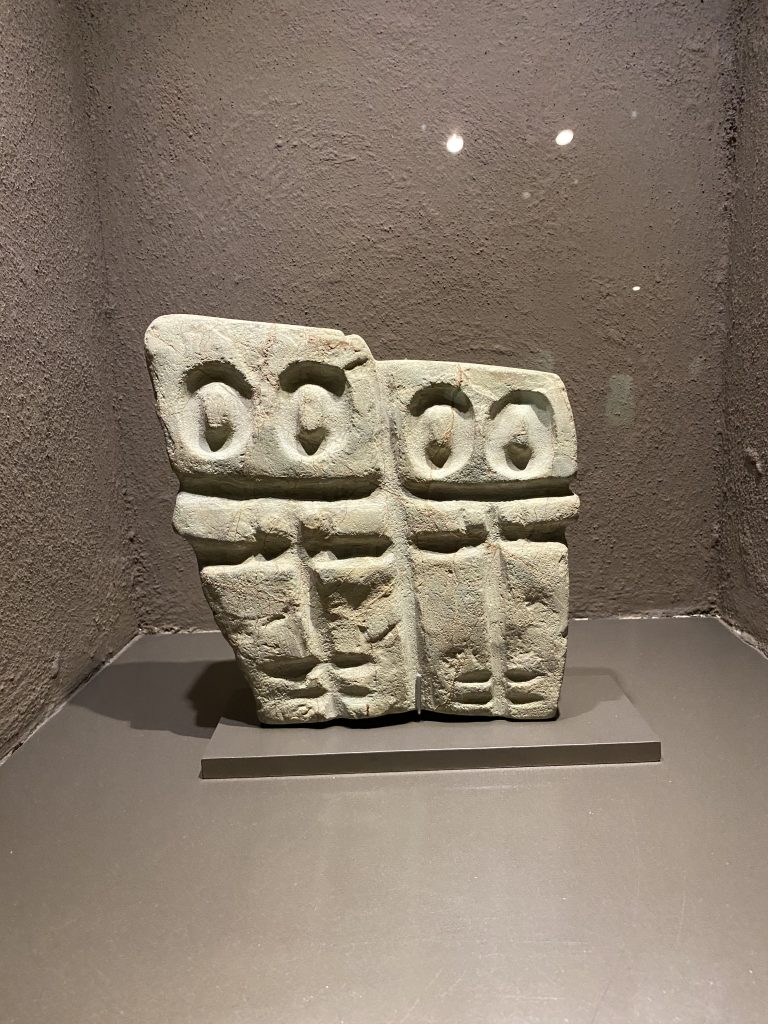
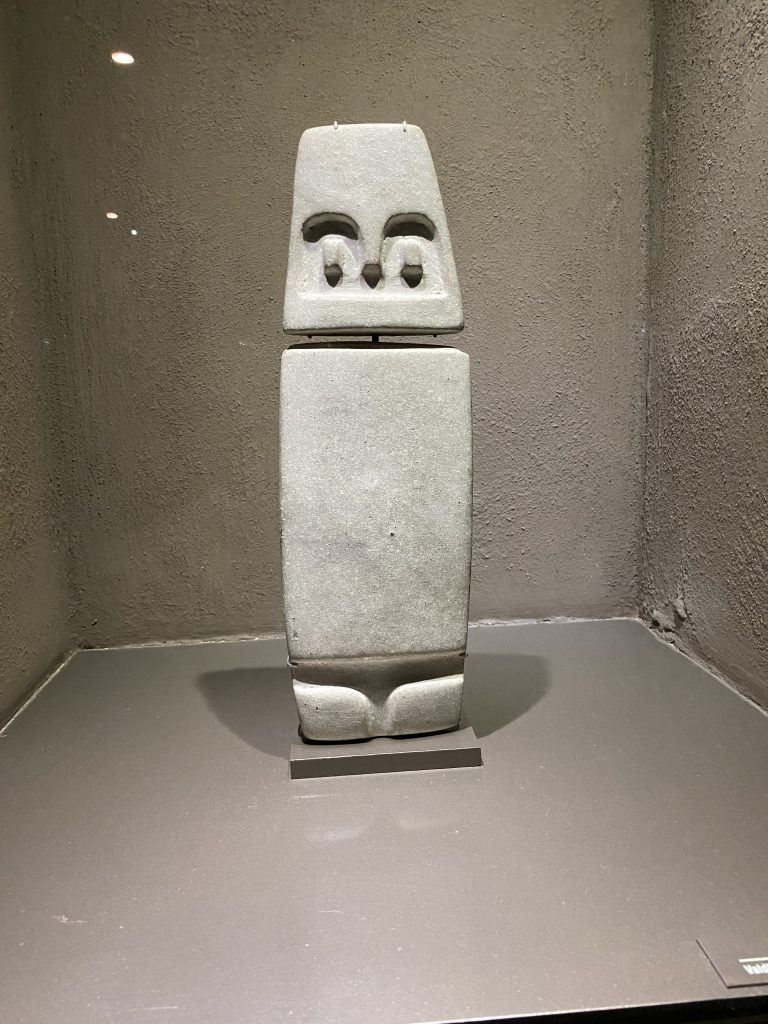
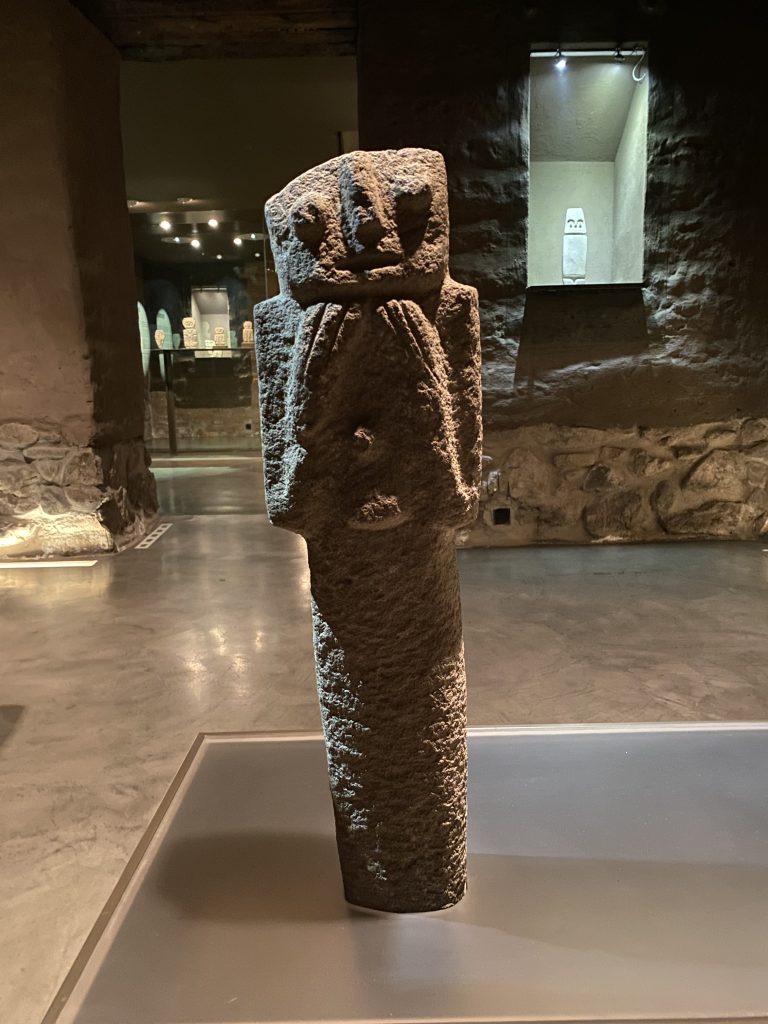
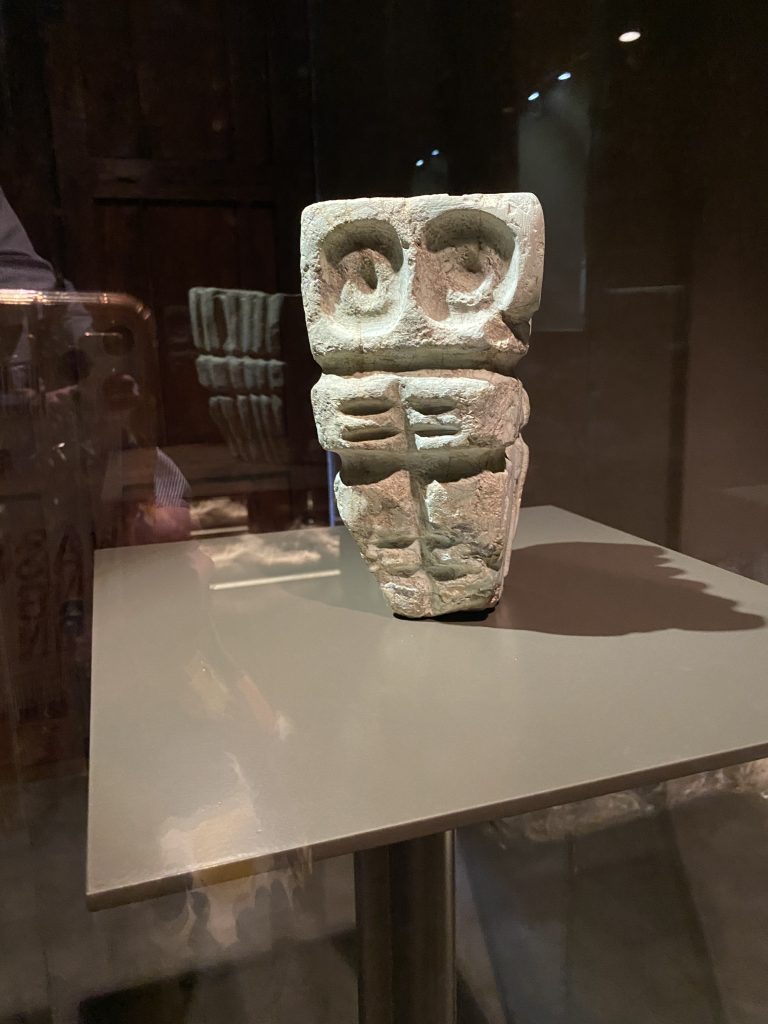
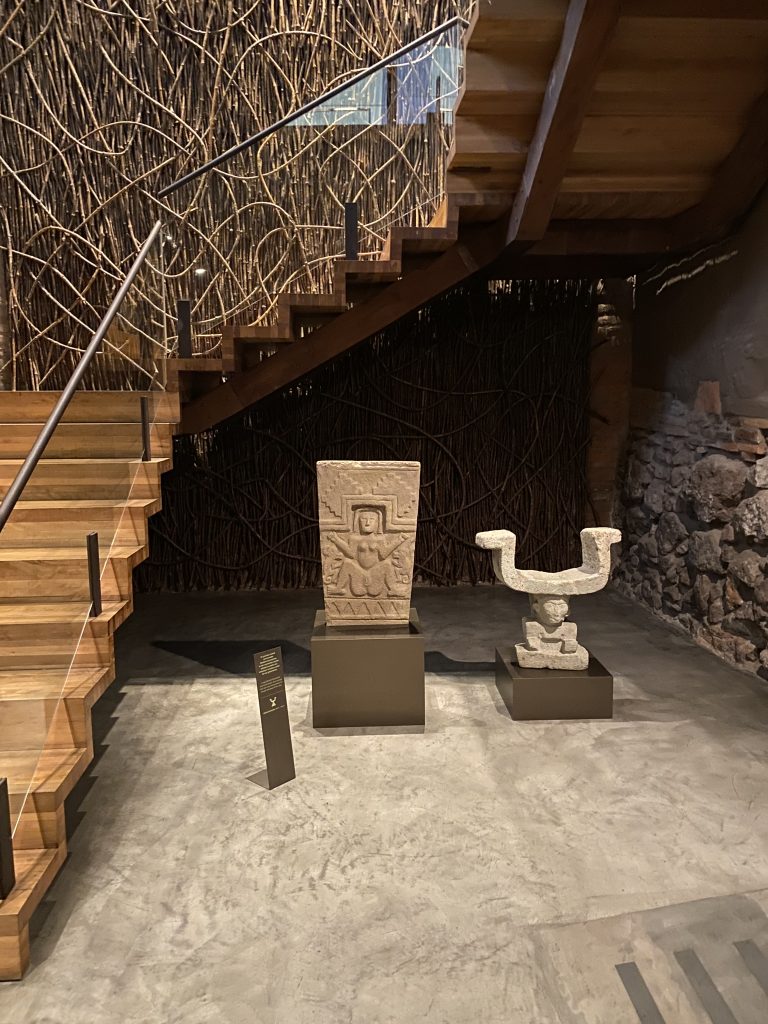
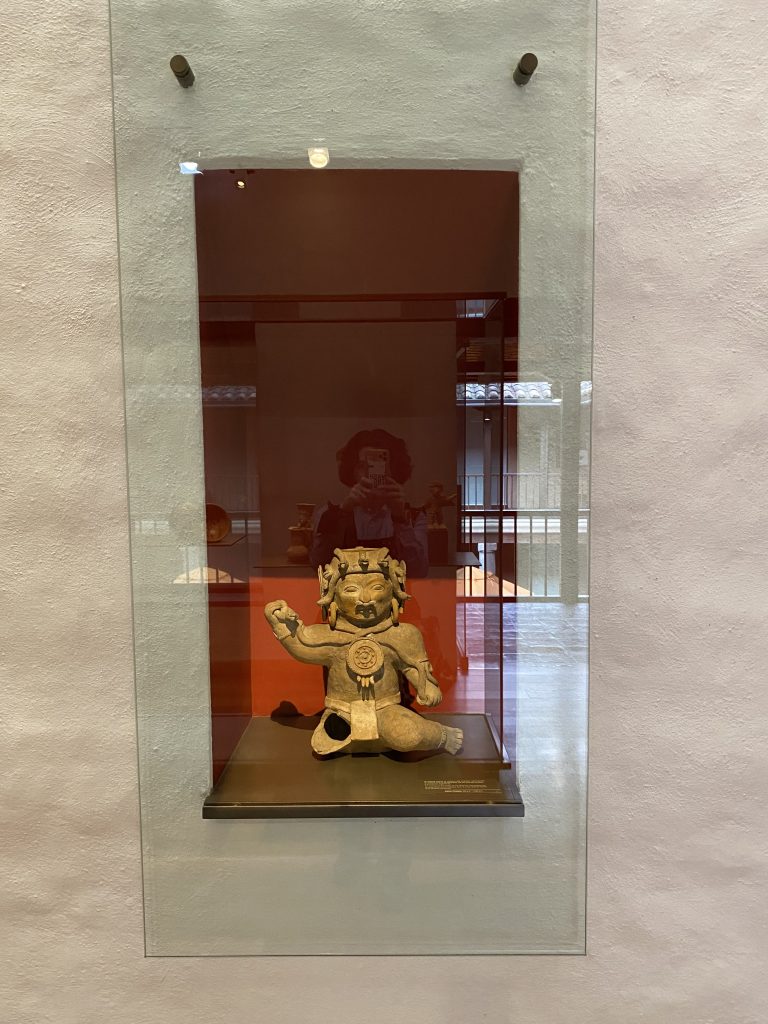
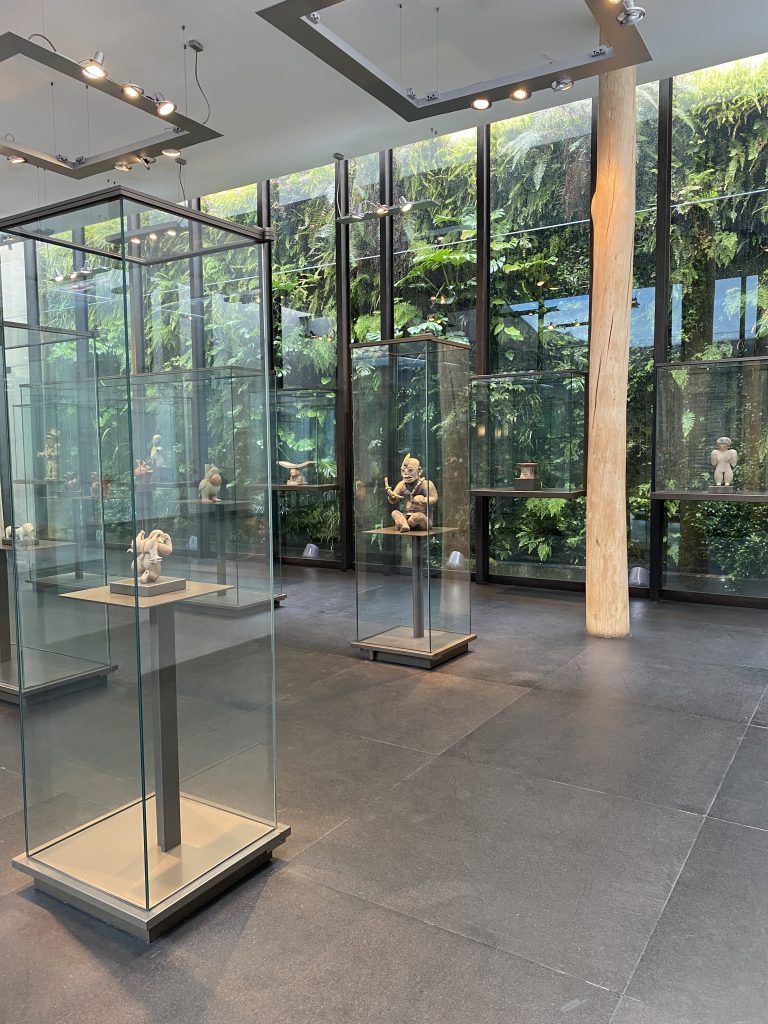
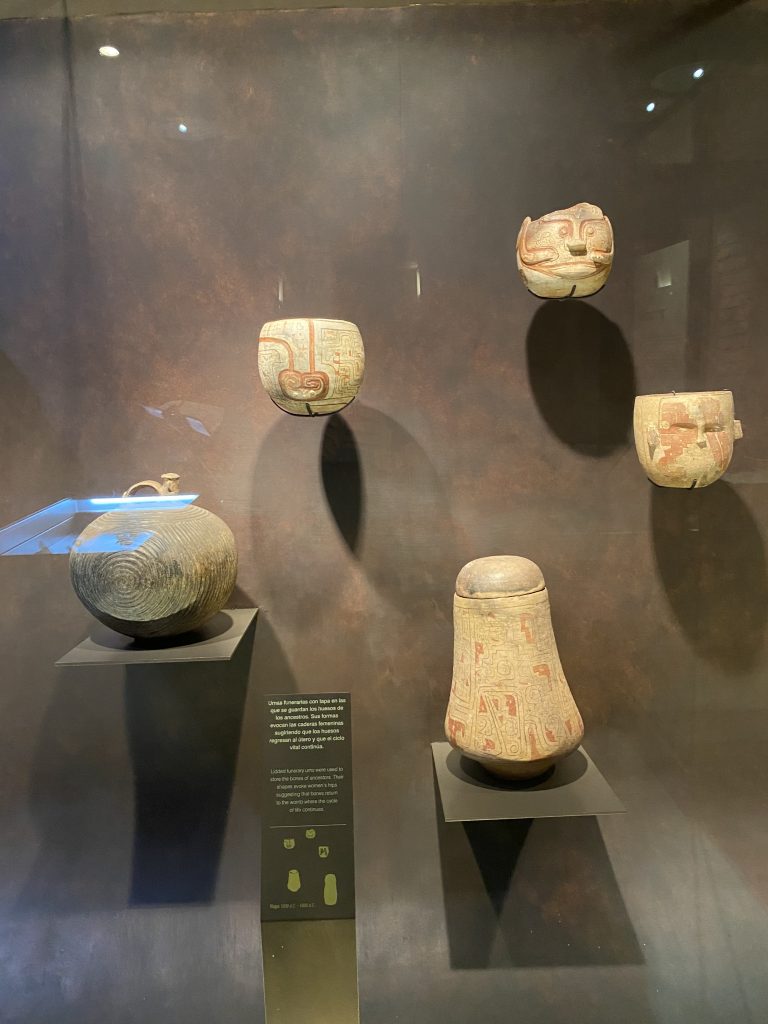
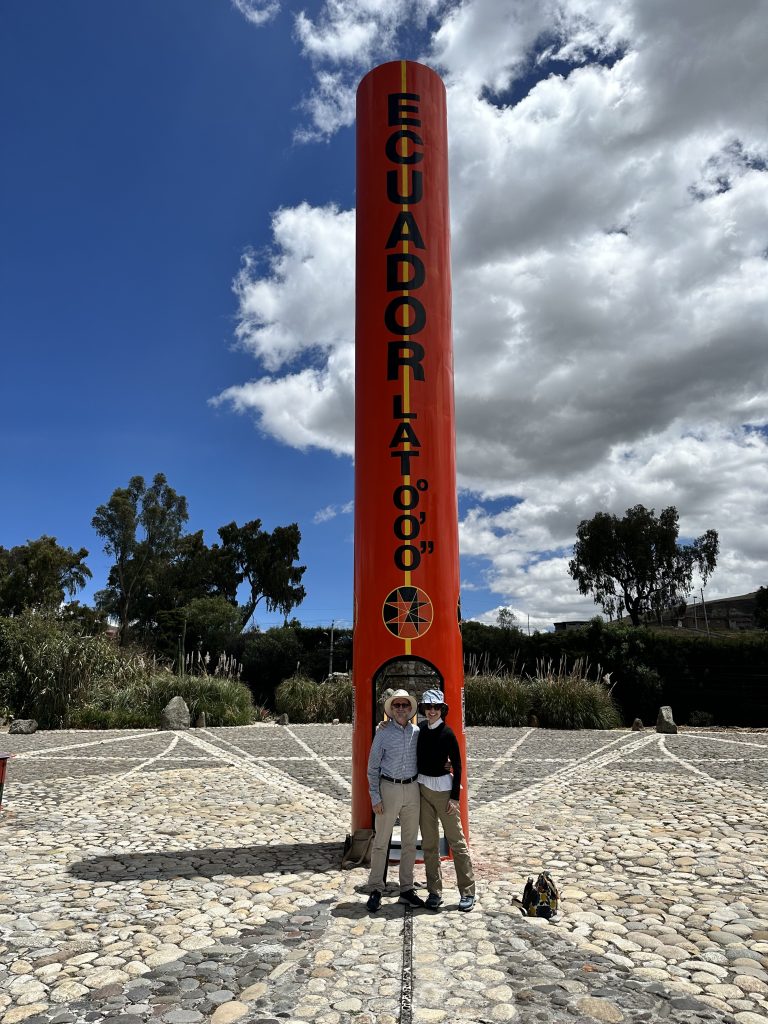
How exciting to stand on the equatorial line! You look and sound like you are having the best time. Thanks for sharing your adventures.
Chuckling whilst being educated by The Directrice!
I think your fans would love to see you start a travel fashion blog: “What to wear and where to go in [XXX].” You could call it The Excursioniste…
I (The Photographer) never saw the reeds. The Directrice never saw the stone carving in the center of the pic. There is a difference between the male gaze and the female gaze!
I absolutely love the bucket hats you are donning on your trip. It feels like it should be absolutely scorching where you are, and yet you are wearing a sweater!?
Safe travels!
Save the chocolate!
First, I think bucket hats get a lot of undeserved criticism — even ridicule — when they are actually a flattering shape on lots of heads. So thank you for appreciating mine. Second, it is not hot at high altitudes. Quito was in the 70s, as was this spot at the equator. I was comfortable wearing a long-sleeved top, but I wore it more for sun-protection than warmth.
Thank you for posting pictures of the pre-Columbian sculpture in their lovely displays at the Casa de Alabado. I love the notion of a statue with a detachable head to signify human sacrifices. If only that could have been substituted for the actual victims.
How can I have known you for 35 years and not known of your love of pre-Columbian art?? It is a beautiful museum.
I think you and the Photographer were wise to spend your money on chocolate vs vow renewal, as chocolate is much more important to maintaining a union!
Good point!
Does standing on the equator make people taller? You always look willowy in pics, but this one has me wondering whether I missed something important in my physics classes… And ditto the question about the sweater!
Hello Marie! According to The Photographer, we do weigh slightly less at the Equator than we weigh in Washington D.C. He estimated the difference as a half a pound or so. The sweater is actually a lightweight jersey — but it is cooler at these altitudes.
We’re slightly lighter for two reasons: first, the Earth’s rotational velocity is greatest at the equator, so centrifugal force is reducing our weight more than it does in DC; and second, the Earth’s rotation makes it bulge outward, so we are a bit further from the core, which means Earth’s gravity pulls on a little less. All in all I think that makes us about half a pound lighter. However, as one article I read online assured me, going to the equator “is not a long-term solution if you are overweight.”
I love your travel posts (and style too). At my age, I’ll likely not make it to Ecuador, but traveling through your eyes is awesome. Thank you.
This was so fun to read. The captions and footnotes especially!
I love old pots so much! And I love all the comments from your dear readers. How do you find a good guide in the places you go?
We have worked with a travel group — Jacada — on all three South America trips. It’s more costly than planning and booking on your own (maybe double the cost if you were acting as your own travel agent and guide?), but Jacada handles all the in-county transportation and guides and deals with any issues that arise during the trip. We decided to go this route after a fun but stressful trip to Italy where we rented a car. The truly enterprising can probably crowd source guides on Facebook or find them with some sleuthing to find local agencies and individuals providing such services. Guiding is a licensed profession in Argentina and Ecuador requiring a specialized college/university degree.
Excellent, thanks!
Small correction – the plant and beans are called cacao; cocoa is what results after some processing.
That museum looks stunning. The right setting truly elevates and, I think, pays respect to such incredible historical art.
Thanks for the correction, AKnyc. I should know this from playing NYT Spelling Bee!
I love these travel posts more than I can say. last night I woke up in the middle of the night and couldn’t sleep and then I thought — “The Directrice is in Ecuador!” I gorged myself on these delightful posts. (Personal favorite is photo of chubby dusty Rose Dog.) More please! xoxo Desh